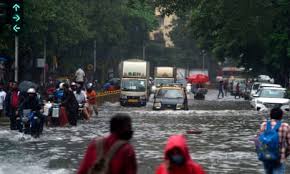Mumbai Rains: Impacts and Responses in the City

Introduction
The recent heavy rains in Mumbai have thrown life in the city into disarray, a recurrent theme during the monsoon season. The significance of these rains is profound, impacting everything from transportation to public health and safety. As one of the largest metropolitan areas in India, the city’s infrastructure is under constant pressure during these seasonal downpours. Understanding the effects and responses to Mumbai’s rains is essential for residents and policymakers alike.
Recent Developments
In the past week, Mumbai experienced some of its heaviest rainfall recorded in the last decade, leading to widespread flooding in low-lying areas. According to the India Meteorological Department (IMD), some districts received more than 200 mm of rain within just 48 hours. This led to the closure of schools, disruption of local train services, and significant traffic jams throughout the city.
The local authorities reported that the flooding affected key business areas, causing losses that local vendors estimate to be in crores of rupees. Emergency services worked tirelessly to rescue stranded individuals and clear flooded roads, but a combination of heavy rainfall and inadequate drainage systems posed a significant challenge.
Impact on Daily Life
The rains have severely impacted daily commutes, with long delays reported across Mumbai’s extensive train network. Many residents took to social media to voice their frustrations, with images of waterlogged streets becoming prevalent. In many neighborhoods, the resilient spirit of the residents shone through as communities came together to assist each other in times of need.
Government Response and Measures
In response to the current crisis, the Brihanmumbai Municipal Corporation (BMC) initiated a series of emergency measures, including activating the monsoon preparedness plan that includes increased cleaning of drainage systems and rapid response teams. Additionally, the Mumbaikars were advised to stay indoors and avoid unnecessary travel until the rains subside.
Conclusion
While the rains are an integral part of Mumbai’s climate, the city’s infrastructure struggles to keep pace with the unpredictable monsoon patterns. The recent events highlight the urgent need for improved urban planning and drainage systems. Looking ahead, it is crucial for both citizens and government agencies to collaborate on strategies that enhance flood resilience and protect the city’s vitality during such challenging weather conditions. As climate change continues to affect weather patterns globally, Mumbai’s experience may serve as a blueprint for other metropolitan areas facing similar challenges.









